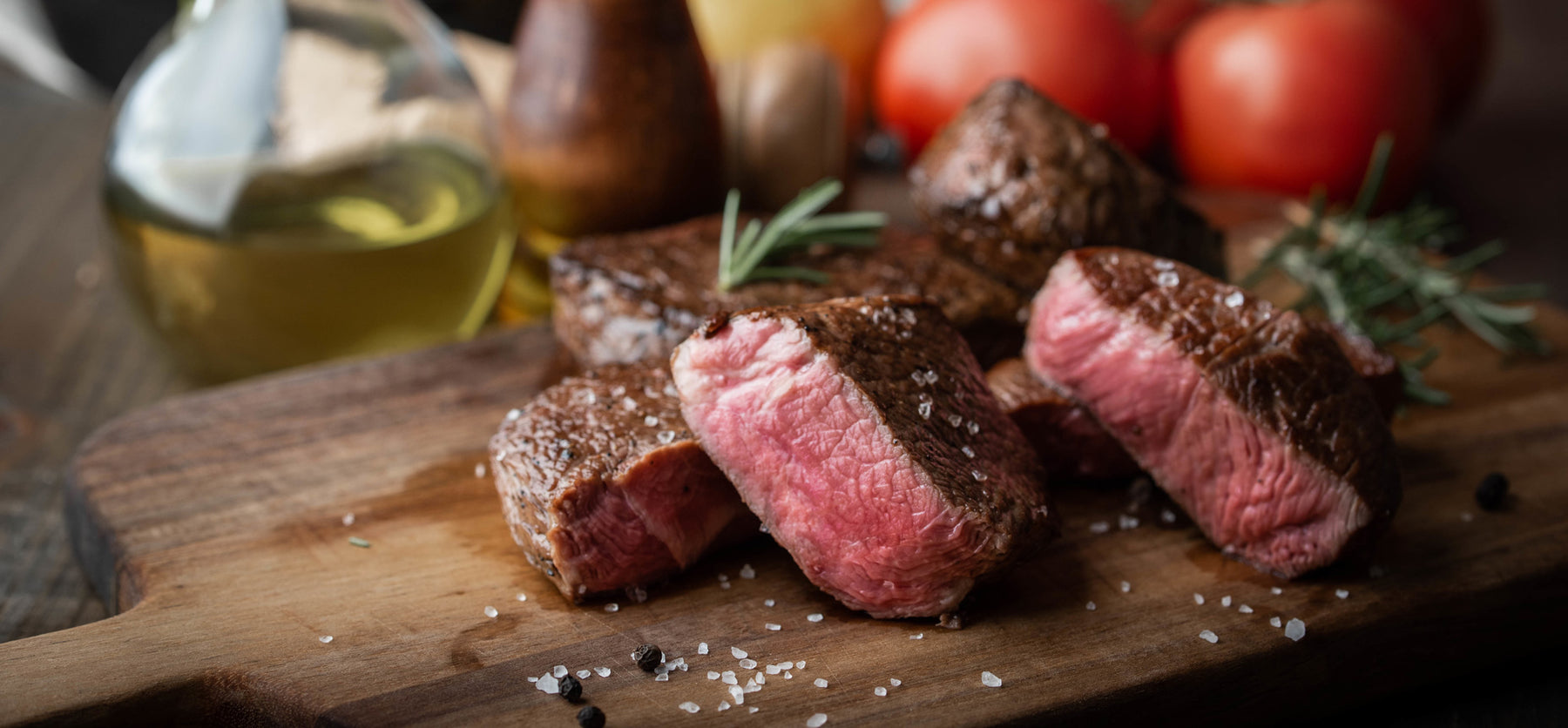
Filet mignon | What is it?
Are you fan of exquisite filet mignon steaks, on the grill, melting in your mouth? If you’re just like us, you’re looking forward to summer to enjoy this tenderness and these grill scents.
But why are people so fond about a good filet mignon? Why is the price higher than the majority of other steaks? What is “mignon” and why is it called that way?
You will find the answers to all these questions by keeping reading below.
Where is it taken?
First of all, let’s clarify something about this meat cut’s nomenclature. You might read about “filet mignon”, or “beef tenderloin”, or “beef fillet”. But are those the same thing?
The answer is no.
You will get two beef fillets, also called beef tenderloin, on each side of the animal’s spine. Here’s the tenderloin (1) as shown on the following figure, taken from the loin:

So, what is the difference between beef fillet and filet mignon? Filet mignon is actually a part of the whole fillet, more precisely at the smaller end of it. The centre and the larger end are generally used for tournedos and chateaubriand.
Filet mignons can also be known as “medallions”, just like for pork meat, and are often 1.5 inch to 2 inches thick.
What is « mignon » and why is it called that way?
In butchery, there are a lot of odd words used for different meat cuts with mysterious meanings. Filet mignon is part of it, because the word “mignon” is rarely used in cuisine.
‘Mignon” is a French word meaning cute, or adorable.
According to experts, we use “mignon” because of this cut’s smaller size, but also because of its delicacy and finesse on the palate.
Why so valuable?
You might have realized that the filet mignon’s price is a little higher than any other steaks.
There are mainly two reasons explaining this cost. First of all, filet mignon isn’t very abundant on a beef, unlike ribeye or striploin, for example. Secondly, this cut is undoubtedly the most tender, because, taken from the loin, it’s not very solicited in daily movements, therefore less muscular and less tough.
Then, scarcity and tenderness altogether bring a higher value on the market.
How to cook?
Cooking filet mignon is rather simple. You only have to sear each side, and it’s recommended to eat medium rare for an optimal result.
Unsure of the cooking time? Follow this guide.

*Always turn midway through cooking
Still unsure? Use a meat thermometer and follow our Maillard guide for internal temperatures. Click here!
At Maillard
Reading this text might have triggered hunger in you. There’s no way to help it, you’re craving for a filet mignon!
We won’t let you hanging. Shop now for our exquisite filet mignon steaks!


